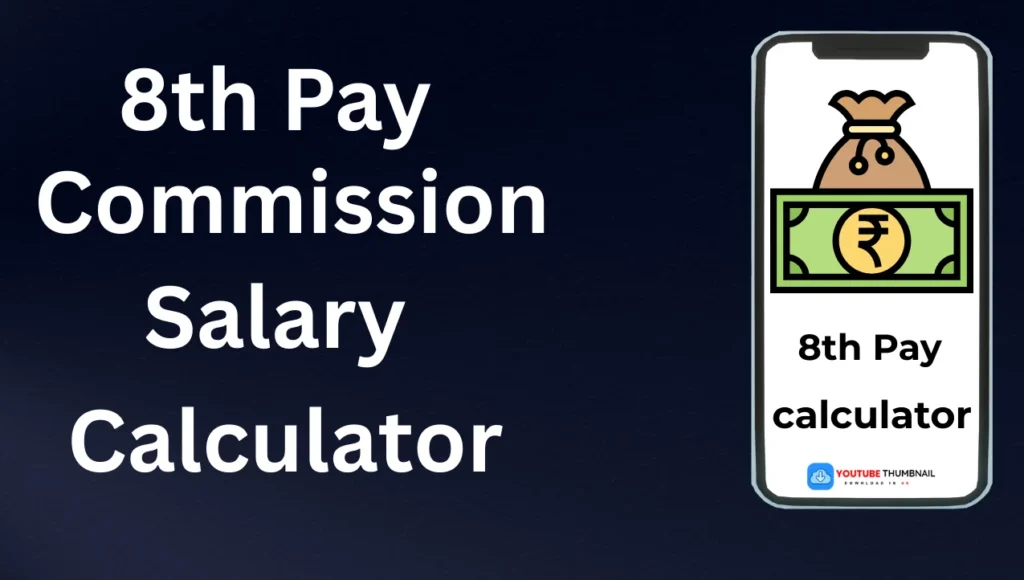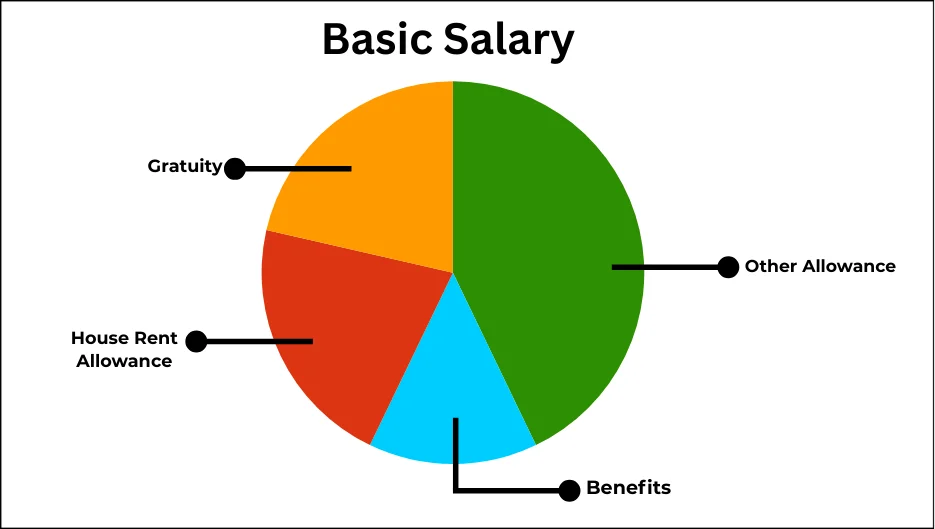8th CPC Salary Calculator (Tentative)
Salary Breakdown
Estimated Deductions
The 8th Pay Commission Salary Calculator is a tool designed to help central government employees in India estimate their revised salaries under the upcoming 8th Pay Commission. Using simple calculations and clear logic, the calculator provides an easy way to predict how much salary one might receive after the new recommendations are implemented from January 1, 2026.
What Is the 8th Pay Commission?
The 8th Pay Commission is a government-appointed body established to review and recommend changes in salaries, allowances, and pensions for central government employees and pensioners. Its main goal is to align employee pay with the rising cost of living and inflation, ensuring fair compensation and improved living standards.
- Formed & Approved: January 2025 by the Government of India.
- Expected Implementation: January 1, 2026.
- Beneficiaries: Nearly 48 lakh central government employees and 68 lakh pensioners.
- Fitment Factor (Multiplier): Proposed at 2.28, possibly up to 2.86 for some categories.

Why Is the 8th Pay Commission Important?
Salary revisions not only affect government employees but also have a “trickle down” effect on public sector undertakings (PSUs) and often influence state government salaries. By raising incomes, the government aims to improve employee well-being, stimulate the economy, and ensure compensation remains competitive and just.
Key impacts include:
- Higher salaries and pensions
- Improved House Rent Allowance (HRA), Dearness Allowance (DA), and Travel Allowance (TA)
- Better retirement and health benefits.
How Does the 8th Pay Commission Salary Calculator Work?
The salary calculator follows a simple formula:New Gross Salary=(Basic Pay×Fitment Factor)+HRA+TA+Other Allowances
Let’s break down each step with clear explanations:
Step 1: Calculate New Basic Pay
- Find your current basic salary (as per the 7th Pay Commission).
- Multiply by the fitment factor (e.g., 2.28 or higher).
- Example: If current basic pay = ₹21,700 (Level 3) and fitment factor = 2.28: 21,700×2.28=₹49,47621,700 times 2.28 = ₹49,47621,700×2.28=₹49,476
- This new figure is your revised basic pay under the 8th Pay Commission.

Step 2: Find House Rent Allowance (HRA)
- HRA is a percentage of the new basic salary, typically between 8%–30% (varies by city category).
- For Metro Cities (Class X): Usually 27%–30%.
- For Class Y Cities: 18%–20%.
- For Class Z Cities: 9%–10%.
- Example: Revised basic pay is ₹49,476 and HRA is 30%: 49,476×0.30=₹14,84349,476 times 0.30 = ₹14,84349,476×0.30=₹14,843
Step 3: Calculate Transport Allowance (TA)
- TA is a fixed value depending on the pay grade and city, plus a percentage of DA added on top.
- Example: Base TA = ₹3,600 and DA is currently 70%: DA on TA=3,600×0.70=₹2,520text{DA on TA} = 3,600 times 0.70 = ₹2,520DA on TA=3,600×0.70=₹2,520
- Total TA = Base TA + DA on TA = ₹3,600 + ₹2,520 = ₹6,120
Step 4: Add Dearness Allowance (DA)
- At the time of implementation, DA is expected to be merged into the basic pay, so it may start at 0% for the first 6 months after revision.
- DA is recalculated and increased twice a year, later added as a percentage of basic pay.
Step 5: Calculate Gross Salary
- The final gross salary is the sum of new basic pay, HRA, TA (with DA), and any other allowances.
- Example: Gross Salary=₹49,476+₹14,843+₹6,120=₹70,439text{Gross Salary} = ₹49,476 + ₹14,843 + ₹6,120 = ₹70,439Gross Salary=₹49,476+₹14,843+₹6,120=₹70,439
Example Pay Matrix Table
Here’s a sample salary transition from the 7th to the 8th Pay Commission for various levels:
| Pay Level | 7th CPC Basic | 8th CPC Basic (2.28x) |
|---|---|---|
| 1 | ₹18,000 | ₹21,600 |
| 2 | ₹19,900 | ₹23,880 |
| 3 | ₹21,700 | ₹26,040 |
| 4 | ₹25,500 | ₹30,600 |
| 5 | ₹29,200 | ₹35,040 |
| 6 | ₹35,400 | ₹42,480 |
| 7 | ₹44,900 | ₹53,880 |
| 8 | ₹47,600 | ₹57,120 |
| 9 | ₹53,100 | ₹63,720 |
| 10 | ₹56,100 | ₹67,320 |
Key Features and Benefits of the 8th Pay Commission Calculator
- Simple Input: Enter your current pay level, basic salary, city classification, and expected fitment factor; the calculator does the rest.
- Instant Results: View estimated new basic pay and total gross salary in seconds.
- Allowance Slabs: Clearly see revised HRA, TA, and DA breakdowns.
- Useful for Planning: Helps employees plan finances and estimate future take-home pay.
Frequently Asked Questions (FAQs)
1. Who should use the 8th Pay Commission Calculator?
Any central government employee, pensioner, or person expecting a pay revision under the 8th Pay Commission can use this tool for a quick salary estimate.
2. Is the fitment factor fixed?
No, it may vary by pay grade and final government approval. The commonly estimated range is between
3. What if the government changes allowance percentages?
If HRA, DA, or TA rates are revised, update those values in the calculator for an accurate estimate.
4. Where can I find an official salary calculator?
Visit portals like ClearTax’s 8th Pay Commission Salary Calculator for online tools. For authentic updates and pay matrix tables, refer to the Department of Personnel and Training (DoPT) official website.
Pros & Cons of 8th Pay Commission Salary Calculator
Pros:
- Easy to use: No complex formulas needed—just enter data and calculate.
- Transparent: Breaks down each salary component for clarity.
- Customizable: Users can input their unique allowance rates and city details for precise results.
Cons:
- Estimates Only: Exact figures may differ based on the government’s final notification.
- Allowance Variability: Changes in DA/HRA/TA policies may impact actual figures.
Conclusion
The 8th Pay Commission Salary Calculator is an invaluable resource for government employees eager to understand how their salaries might change. By combining basic pay, the proposed fitment factor, and revised allowances, this calculator delivers quick estimates with clarity and transparency. Anyone interested in future salary projections should regularly check official sources for updates, especially since pay commission rules or fitment factors can change any time prior to implementation.
For the most accurate and up-to-date information, always refer to reputable government portals such as the DoPT official website.
